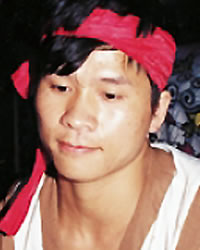Hmong Shua, Sinicized in Vietnam

Photo Source:
Copyrighted © 2026
Peoples of the World Foundation All rights reserved. Used with permission |
Send Joshua Project a map of this people group.
|
| People Name: | Hmong Shua, Sinicized |
| Country: | Vietnam |
| 10/40 Window: | Yes |
| Population: | 2,600 |
| World Population: | 353,600 |
| Primary Language: | Sinicized Miao |
| Primary Religion: | Ethnic Religions |
| Christian Adherents: | 20.00 % |
| Evangelicals: | 15.00 % |
| Scripture: | Portions |
| Ministry Resources: | No |
| Jesus Film: | Yes |
| Audio Recordings: | Yes |
| People Cluster: | Miao / Hmong |
| Affinity Bloc: | Southeast Asian Peoples |
| Progress Level: |
|
Identity
The Hmong Shuad are a distinct ethnolinguistic people group. Their language is very different from all other Miao languages. Most of this group use the autonym Hmong Shuad which means "Sinicized Miao." However, the Hmong Shuad still speak their own Miao language and wear traditional clothing. The Chinese call different Hmong Shuad subgroups by local names, such as Waishu Miao (Lopsided Comb Miao), Biantou Miao (Flat Head Miao), Mushu Miao (Wooden Comb Miao), and Shuixi Miao (West of the Water Miao).
History
The Miao have a woeful history of warfare and genocide inflicted on them by the Chinese. One attack was launched in 1726. Qing Dynasty troops set more than 1,000 Miao villages on fire, butchered tens of thousands of people, and destroyed their farmland. In response, in 1727 various Miao tribes unified against the Chinese, constructing stone signal towers at one-mile intervals along mountain ridges. The Miao took blood oaths to fight the Chinese to the death. They even killed their own wives and children, so they could face the advancing enemy as men with nothing to lose. In 1795 the Miao took up knives and long poles in another revolt against Qing troops. The Miao occupied many townships for more than a decade. Another uprising occurred from 1851 to 1874. The Miao forces were victorious and gained control of almost the entire northwest area of Guizhou Province.
Customs
Some Hmong Shuad claim their ancestors were soldiers sent to Guizhou from Jiangxi. The soldiers settled down and married Miao women. As a result, today many Hmong Shuad do not even claim Miao ethnicity. Other Miao groups call them "Chinese Hmong."
Religion
The majority of Hmong Shuad are animists. They also worship their ancestors, a practice that probably stems from their Chinese origins.
Christianity
Because they are such a widespread group, the influence of Christianity among the Hmong Shuad is difficult to gauge. However, there is a Christian presence in Anshun and Shuicheng, two of the areas where the Hmong Shuad live. Jinping County in Yunnan also contains many Hmong Daw believers. A number of Hmong Shuad attend Han Chinese churches in the region.